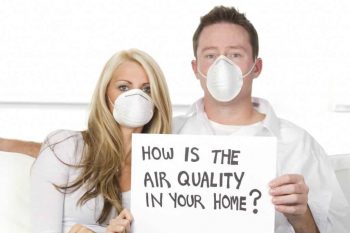Indoor Air Pollution

It refers to physical, chemical and biological characteristics of air in the indoor environment within a home, building.
Different conditions are responsible for indoor air pollution in the rural and urban areas.
In the developing countries, it is the rural areas that face the greatest threat from indoor pollution.
In the urban areas, exposure to indoor air pollution has increased due to a variety of reasons, including the construction of more tightly sealed buildings, reduced ventilation, the use of synthetic materials for building and furnishing, pesticides and household care products.
HEALTH EFFECTS OF INDOOR AIR POLLUTION
1.RESPIRATORY
Several effects on respiratory system have been associated with exposure to IAP (indoor air pollutants). These include acute and chronic changes in pulmonary function ,increased incidence and prevalence of respiratory symptoms.
Asthma, manifested by attacks of airway narrowing leading to shortness of breath and wheezing can be caused or aggravated by exposure to allergens at home.
2. ALLERGIC DISEASES ASSOCIATED WITH EXPOSURE TO IAP.
Allergic asthma, allergic rhinoconjuctivitis are important diseases caused by allergens at home. Allergic asthma may be caused by exposure to indoor air pollutants, either acting as allergens or as irritants.
3. CANCER AND EFFECTS ON REPRODUCTION ASSOCIATED WITH EXPOSURE TO IAP
Lung cancer is the major cancer which has been associated with exposure to IAP. Effects on human reproduction have been associated with exposure to chemicals in the environment.
4. SENSORY AFFECTS ON NERVOUS SYSTEM
It causes irritation of the eye, nose and throat .In severe cases it may cause headache, nausea, loss of coordination.
5. AFFECTS ON HEART WITH EXPOSURE TO IAP
Carbon monoxide combines with hemoglobin to lessen the amount of oxygen that enters our blood through our lungs .
Early effects include reduction of time of onset of time of chest pain in exposed,exercising heart disease patients.
WAYS TO CONTROL INDOOR AIR POLLUTION
- Source Control
We cannot stress the importance of reducing, and/or removing the source of the indoor air pollution. This may be a contaminated carpet, wall, or even ventilation (HVAC) system. - Ensure proper ventilation
Once the sources to pollution have been removed, the air must be cleaned and circulated with natural outdoor air. Increase the amount of outdoor, natural air coming indoors. Open windows, doors, turn on fans in windows, attics, crawl spaces, turn on kitchen and bathroom exhaust fans, and air conditioning units with vent open. - Ensure proper air filtration/cleaning
The EPA provides a comprehensive list of air cleaners ranging from small table-top versions to sophisticated whole-house models. - Replace Old Filters
Old filters in heating, air conditioning, and ventilation units (HVAC), can be a major cause of indoor air pollution, and must be monitored, and replaced if necessary. - Smoke Outside
We don’t have to tell you the endless list of contaminants and resulting adverse health effects caused by smoking. - Avoid Painting, Spraying Combustible products indoors (or near ventilation units)
Following this rule, would have saved the University of Massachusetts Boston more than $600,000, several staff jobs, and one newly painted couch. - Maintain clean roof, gutters, storm drainage
To prevent water leaks, and moisture buildups in the home, basement, etc. - Reduce and Remove Moisture
The simple fact is that mold needs moisture to live. Control moisture and control mold. - Leave Asbestos Up To The Professionals
The single worst thing anyone can do is remove, or stir up asbestos-containing objects; sheetrock, ceiling tiles, floor tiles,


